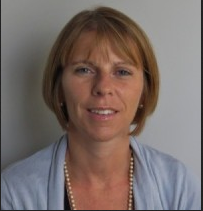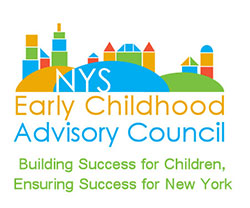Name of Initiative: Early Childhood Alliance, Onondaga
Interview with: Laurie Black, Director
Region served: Onondaga County
Population served: All families with children birth to five
Funding: Blended and braided public and private dollars
About the Early Childhood Alliance, Onondaga:
The Early Childhood Alliance (ECA) is a diverse cross-section of the community stakeholders that impact the early childhood system in Onondaga County. The ECA was launched in January 2015. The Alliance works within the larger community to develop a coordinated and strategic early childhood system.
Vision statement: All young children in Onondaga County are healthy and thriving and are successful in school and life; all families of young children are supported in their parenting and have the knowledge, skills, confidence and resources they need to raise their children in healthy and nurturing environments.
Contact:
Email: ecaonondaga@gmail
Phone: (315) 436-9857
Website: ecaonondaga.org
Interview:
The Early Childhood Alliance is currently made up of four primary initiatives: Talking is Teaching, Comprehensive Developmental Screening, Quality Child Care and Early Learning, and Comprehensive Supports for Pregnant and Parenting Women. Director Laurie Black speaks to the primary goal of the ECA which ties these diverse initiatives together: “At the end of the day if you were to boil it all down, we want more children to enter schools ready to learn in Onondaga County.” Black highlights the way social justice and race equity guide their work: “Race equity and social justice is central to the work…we have all children as our lens which means where ever we see disparity in outcomes or access, we need to be addressing that in our efforts … we know that we have disparate outcomes and so we have more work to do.” Central to their practices of social justice and race equity is the role of authentic family engagement: “Our initiatives align with empowering parents with the knowledge and resources that enable them to be their child’s best first teacher – so whether it is Home Visiting, Help Me Grow, Talking is Teaching – the common goal is providing parents with the supports so that they can provide their child with optimal child development.”
The ECA works to provide families with young children comprehensive support by engaging in cross-systems work at the local level. Black highlights the importance of this approach stating that “We haven’t built a strong enough system that has responsiveness to families and children … We are not going to have better outcomes for families until we take this fragmented system and strengthen it by weaving it together through a cross sector coalition.” In discussing the effectiveness of this strategy, Black cites the importance of developing a cross-systems team: “You need to have stakeholders from each part of the fragmented system at the table – working together and aligning efforts.” This cross systems collaboration, along with powerful leadership, is what gives their work momentum and keeps stakeholders motivated and engaged in the work.
When discussing barriers to engaging in systems change work on the local level, Black speaks to two primary challenges, the first being resources: “The system is underfunded and in order to do the truly transformative change that needs to happen, we need a lot more in the way of funding than our local community would be able to achieve … that’s where State and Federal partners are so important as funding supports of investing in local communities.” Along with insufficient access to resources, they face the challenge of fragmented communication across the state: “The issues that we are trying to solve are not necessarily unique to our community and so in New York State it is hard to see what is happening in similar communities across the state – it is inefficient for each community to be ‘reinventing’ the early childhood wheel on their own. There is a lot of good information at the State level and I think having more effective ways to share out that information with local communities would be helpful.” When asked about her vision for increased cross-sector collaboration at the local, State and Federal levels, Black explains that “There isn’t a sustainable public funding source for coalition building or cross sector coalition activity … to be truly impactful, the investment in the infrastructure of collaboration has to be made.”
While there are barriers to engaging in systems change work on the local level, Black highlights the unique opportunity of this community based initiative: “[Onondaga] is a connected community and that really lends itself to nice collaboration, we think of an idea, generate resources for that idea, and test that idea out so we are great for that opportunity of piloting things and figuring out how does it really work at the ground level … Because of our size, the leadership in our community is very comfortable and familiar with one another and they partner well – leverage resources well and are working in alignment with one another.”
